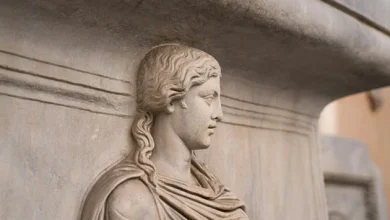Why do Sikhs wear turbans

The turban is a well-known authentic headdress that many people worldwide have used. Among them are the Indians, who often dazzle with their colourful and distinctive headdress. However, not everyone will wear a turban, and there are many regulations about the colour and size of the headpiece.
Many people believe that Indians wear turbans fairly widely, but just a small percentage of Indians do so. Turbans are, in fact, a traditional headpiece of Sikhism, one of India’s national religions. Though only upper castes could wear turbans at the time of their creation in the 15th and 18th centuries, Sikhs, who are known for their concern for equality in society, finally allowed all of their people to do so.

The turban is known in India as a Pak in Sanskrit, and in the northern part of the country, in the state of Punjab, a concentration of the custodians of old wisdom, the Sikh caste, it is known as a Pagg. The turban is also known as Dastar, which is a more respectable term. The necessity for Sikhs to maintain the kesh, the custom of keeping their hair uncut, led to the practice of wearing it. The reason they never cut their hair is due to the same custom. Furthermore, it would be a dishonour for a married man with a moustache and beard to walk out in public without a turban.

The turban is a long material that a Sikh wraps around his head every day. Sikh Indians, on the other hand, not only wear this turban because it is customary, but they have also given it practical value. Turbans, for instance, were formerly used to hold money and jewellery, stamps, and even paperwork. However, the primary function of the turban is to guard the owner’s third eye against evil eyes.
The colour of the turban has a specific meaning

White
To expand the aura and the person’s projection, white turbans are worn. White is often connected with the purity of body and mind, enabling one to concentrate on their thoughts and activities. This permits a Sikh to have a clear mind and concentrate on God and their spiritual existence.
White Turbans and white clothing are occasionally used at Sikh Kirtan events to enable increased energy flow since white amplifies our electromagnetic field, providing a feeling of positive and strong energy.
The simplicity and calm of a white turban attract the seniors.
White turbans are often used when bright clothing is inappropriate, such as at funerals.
Blue and orange
Sikh Khalsa’s colours are orange and blue. Blue represents a ‘warrior’ who will defend their religion and the good. It also reminds us of previous generations’ fortitude and resistance to persecution. Both orange and blue are symbols of Sikh history and war.
Orange, on the other side, symbolises knowledge. Orange also represents courage and wisdom, two virtues emphasised in Sikhism.
Orange is commonly combined with blue to represent sacrifice and strength.
In religious commemorations and observances, blue and orange will be worn to signify a feeling of community, togetherness, and oneness.
Black
Black turbans are widely used since the colour is neutral and can be worn with any clothing. However, black symbolises ego sacrifice and humility. Black turbans remind us of this quality taught in Sikhism.
Yellow
Yellow is a cheerful colour that represents light and joy. It allows one to study and get insight into new information that may help them on their life path. Yellow also signifies freedom and liberation.
Pink and red
Pink and red turbans are traditional groom wear, and the colours are considered lucky for the marriage, representing fresh beginnings full of prosperity. However, the colours may symbolise more than just marriage.
Gold
Gold is often associated with weddings, although it has a wider representation. Gold represents peace, healing, and mental clarity. The Golden Temple gets its importance from the Harminder Sahib, a sanctuary of peace and meditation.
Gold is another popular wedding colour.




